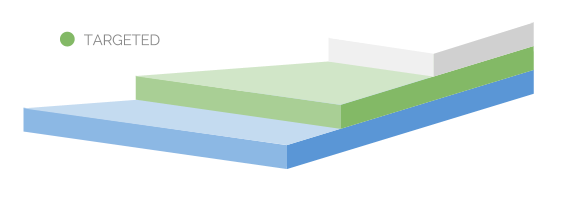Check In/Check Out (CICO)
|
This has proven to be an effective intervention if students are exhibiting off task behaviors as a means to get peer or adult attention (rather than trying to avoid or escape situations).
Students have a daily Check In every morning (with a specific person, at a specific place and time), earn points throughout the day for exhibiting appropriate behaviors, which is documented on their CICO progress form, and have an afternoon Check Out to determine their efforts towards meeting their daily goal. Parents are sent copies of this form as well. |
The concept is that the Check In/Check Out person provides the student with positive interactions to begin and end the day, with reminders of how to demonstrate appropriate behavior. Throughout the day, students solicit feedback from teacher(s); teachers are encouraged to remind the students of the positive behavioral expectations and comment positively when the student exhibits those behaviors. At the end of each class, the teacher documents the student’s behavior by assigning points earned. At the end of day, students return to the Check Out person for the daily total, and get a copy to take home.
This intervention has proven effective when there are reasonable expectations for each student; in other words, the goals set are not too high and can therefore be attained by the student.
This intervention has proven effective when there are reasonable expectations for each student; in other words, the goals set are not too high and can therefore be attained by the student.
How to:
- Prior to Implementation, as a team develop a daily progress report/form that indicates the following: school wide/class wide expectations; the number of points the student could earn for following those expectations during each class; personal behavior expectations; the target/goal number of points to earn daily; a written prompt for teachers to share positive comments about the student behavior; and a written prompt for parents to comment as well.
- Determine the target number of points to earn daily by using the average number of points the student has earned during baseline data collection. The target goal will then gradually increase as the intervention continues.
- Teach student expectations and practice for CICO.
- Explain the process as a support system to help student demonstrate more appropriate behavior and identify an adult who will conduct both the Check Ins and Check Outs (the students can choose). Show student the form and explain its various aspects. Practice how to ask teacher(s) for feedback at end of class and explain that teacher(s) will document points earned for specific targeted behaviors. Identify the times and place for Check In and Check out.
- Train teachers/school staff in expectations for CICO, particularly with how to record the behavior and encourage students to meet their goals for consistency. Teachers are encouraged to use positive language with the student around the specific behaviors and goals, “You remembered to raise your hand, even when you were excited!” or “I think you can do better. Let’s aim for that for next period.” Troubleshoot ideas for issues that may arise (i.e. students losing their forms, teachers forgetting to document the behavior).
- Implementation Procedures: In the morning, student checks in with designated adult. The adult (counselor, vice principal, chosen by the students and/or team) provides positive interaction and reminds student of their specific expectations and goals for behavior.
- Student gets new blank CICO progress report, which includes prompts for expected, appropriate behaviors.
- After each class/period, student solicits feedback from the teacher, including points earned for each behavior goal, which is documented by the teacher on the CICO progress report. The student can document the points, but the teacher needs to sign the form for accountability and accuracy.
- At the end of day, student checks out with designated adult. Adult provides both verbal and/or tangible reinforcement if the student meets daily goal.
- The original CICO progress report is kept by a designated adult for data collection and progress monitoring, while a copy of the daily report is sent home for parent feedback and input. Parent input and signature is shown to the adult the next morning at Check In; in ideal situations, parents also provide rewards at home for attaining daily goals.
- If the CICO system has been implemented consistently across teachers and environments and is still unsuccessful, try the Check In/Check Up/Check Out (CICUCO) intervention.
References:
Simonsen, B., Myers, D., & Briere, D. E. (2011). Comparing a behavioral check-in/check-out (CICO) intervention to standard practice in an urban middle
school setting using an experimental group design. Journal of Positive Behavior Interventions 13(1), pp. 31-48. doi: 10.1177/1098300709359026
Fairbanks, S., Sugai, G., Guardino, D., & Lathrop, M. (2007). Response to Intervention: Examining classroom behavior support in second grade. Exceptional
Children, 73, 288-310. doi: 10.1177/001440290707300302
Simonsen, B., Myers, D., & Briere, D. E. (2011). Comparing a behavioral check-in/check-out (CICO) intervention to standard practice in an urban middle
school setting using an experimental group design. Journal of Positive Behavior Interventions 13(1), pp. 31-48. doi: 10.1177/1098300709359026
Fairbanks, S., Sugai, G., Guardino, D., & Lathrop, M. (2007). Response to Intervention: Examining classroom behavior support in second grade. Exceptional
Children, 73, 288-310. doi: 10.1177/001440290707300302



